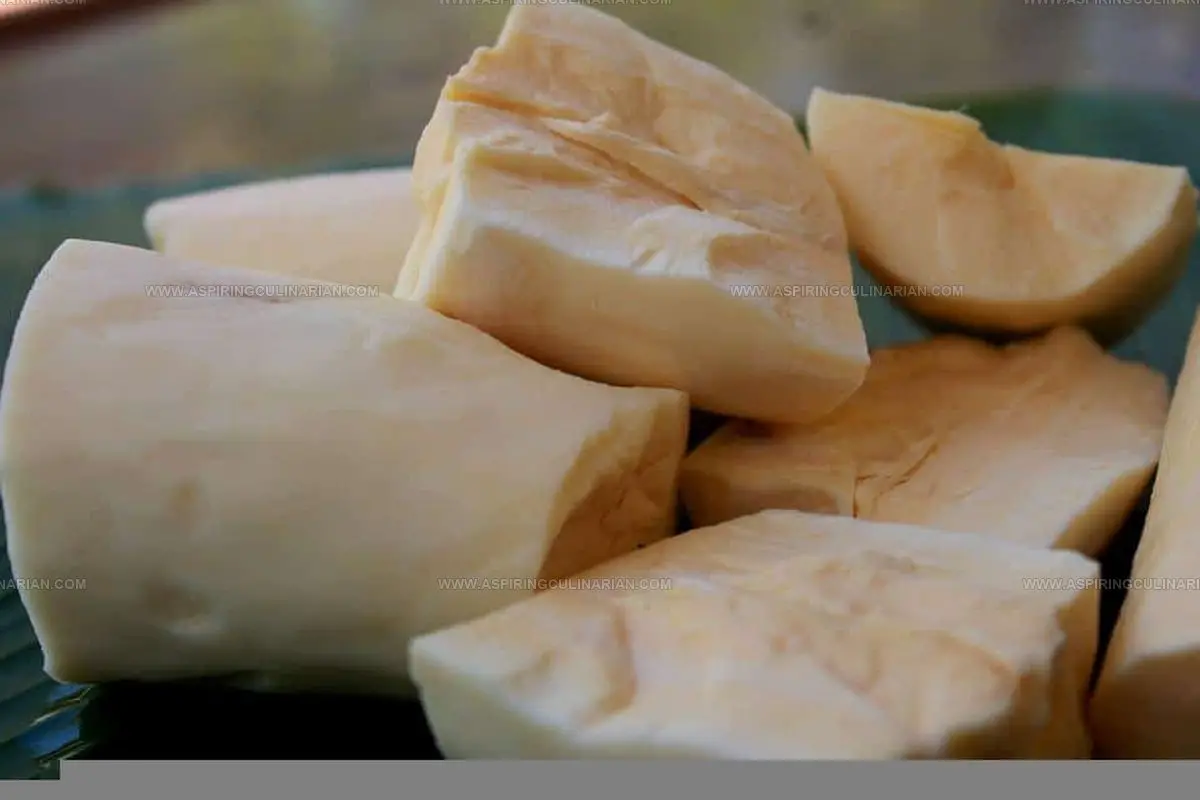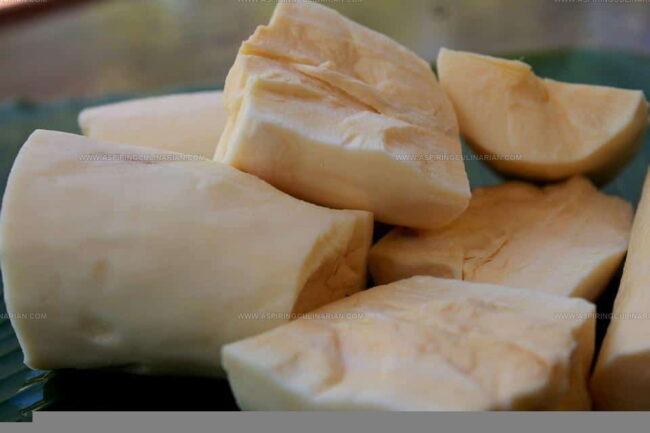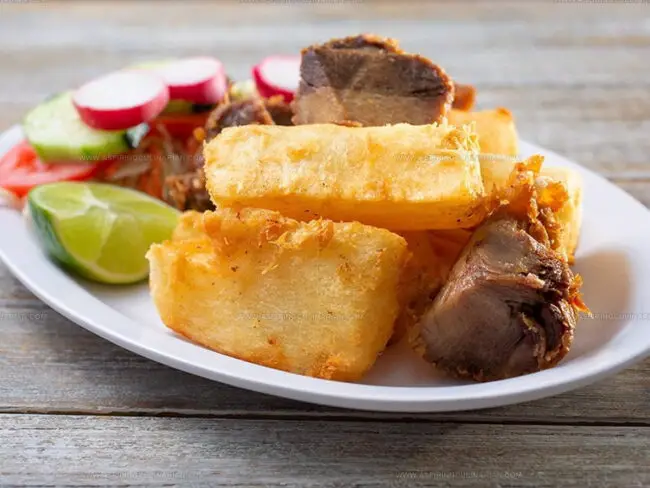What Does Yuca Taste Like? A Starchy Adventure Awaits!
Yuca, a starchy root vegetable popular in many cuisines, often sparks curiosity among food enthusiasts seeking new culinary experiences.
Many people encounter this ingredient and wonder about its unique characteristics.
Tropical regions have cultivated yuca for centuries, making it a staple in traditional dishes across Latin America and the Caribbean.
Its versatility in cooking methods creates intrigue for those unfamiliar with its potential.
The root's texture and flavor profile might surprise you with unexpected qualities that set it apart from more common vegetables.
Nutritionists and chefs appreciate yuca for its remarkable attributes that extend beyond simple taste.
Your culinary adventure into understanding this fascinating ingredient promises to uncover delightful insights about a vegetable that has nourished cultures for generations.
Let's dive into the delicious world of yuca and unlock its gastronomic secrets.
Yuca Root Overview
Yuca roots grow underground and come from cassava plants.
South American cultures have enjoyed this vegetable since early colonial times.
Regions like Colombia count yuca as a key part of their traditional meals.
Two main yuca types exist: white and yellow versions.
White yuca looks similar to potatoes with a mild earthy flavor.
Cooks can make this root sweeter by adding sugar or honey.
Colombian kitchens use white yuca in multiple dishes like arepas, fried plantains, and sweet treats.
Chefs appreciate its smooth texture and simple taste.
Yellow yuca offers a different cooking experience.
Cooks prefer frying this version instead of boiling because it keeps a chewier texture.
Garlic works well with yellow yuca, adding depth to its natural flavor.
Chefs can experiment with different cooking methods while maintaining the root's core taste.
Yuca Flavor Profile
Yuca has a gentle, nutty flavor with a touch of sweetness and an earthy, potato-like taste that shines when cooked:
Whether you roast, fry, or boil it, yuca’s flavor and texture bring a unique twist to classic comfort foods.
Yucca: Health Benefits
Lucas carries nutrients that help support overall wellness.
Choline works as a key building block for brain and nerve system performance.
This substance helps keep cell structures and genetic material strong.
Without enough choline, body processes slow down and become less effective.
Potassium levels in yuca support critical body functions.
This mineral helps control heart rhythm, kidney operations, and muscle movements.
Lucas offers several health advantages:
Lowers The Chance Of Getting Cancer
Yuca root carries a rich orange shade from its beta-carotene content.
Inside this vegetable sit multiple antioxidants working together to protect health.
Saponin stands out as a powerful antioxidant that battles harmful free radicals circulating in our bodies.
Scientists have connected these free radicals with potential cell damage and increased cancer risks.
Beta-carotene serves as just one of several protective compounds found within this root vegetable's structure.
Digestive System Health
Yuca root supports healthy digestion in helpful ways.
Special starch inside this vegetable works like fiber to keep your gut feeling good.
Gut-friendly bacteria thrive when you eat yuca root, which helps your digestive system work better.
Eating this root can also make you feel more satisfied after meals, potentially helping you manage weight more easily.
Helps Control Blood Sugar
Scientists study how yucca root's special starch might help control blood sugar.
Research shows eating this starch can reduce insulin reactions after meals.
Careful amounts of yucca root could support balanced blood sugar management without causing sudden insulin jumps.
Yuca or Potatoes: Which Is Better?
Yuca carries more calories, protein, and carbohydrates compared to potatoes.
Fitness enthusiasts and active individuals might find drinking yuca helpful because of these qualities.
With rice and corn, yuca serves as a key carbohydrate source in tropical regions.
Yuca offers good amounts of potassium, which supports body fluid balance and manages blood pressure.
Magnesium in yuca helps with energy production.
Vitamin C within yuca could potentially block cancer cell growth.
Potatoes contain slightly more fiber and include vitamins B-complex (pyridoxine) and A, which support metabolism and eye health.
Deciding between potatoes and yuca depends on personal health goals.
Someone focused on boosting carbohydrate intake without excess fat might consider adding yuca roots to their diet.
Best Ways to Eat Yuca
Yuca, also called cassava, is a starchy root that’s enjoyed around the world in many tasty ways:
No matter how you prepare it, yuca brings a mild, nutty taste and satisfying texture to all kinds of dishes.
Yuca vs. Cassava: Are They the Same?
Yuca and cassava are actually two names for the same root vegetable, known for its starchy texture and versatility in cooking:
Whether you see it labeled as yuca or cassava, you’re getting the same delicious and starchy root perfect for many recipes.





Nathaniel Brooks
Founder & Recipe Developer
Expertise
Farm-to-table cuisine, Seasonal recipe development, Culinary storytelling
Education
Ivy Tech Community College – Indianapolis, IN
Culinary Arts / Hospitality Administration & Events
Focused on hands-on training in classical and modern culinary techniques.
Nathaniel’s story starts in the foothills of the Appalachian Mountains, where farm stands, backyard gardens, and old family recipes shaped his love for real food. After graduating from Ivy Tech Community College in Indianapolis, he spent years working in farm-to-table kitchens, learning how to turn local, seasonal ingredients into something memorable.
Today, Nathaniel pours that same spirit into every single recipe on Aspiring Culinarian – recipes that feel real, comforting, and connected to the land. When he’s not in the kitchen, you’ll find him foraging wild herbs, chasing sunsets with his camera, or writing about the flavors that shaped his roots.